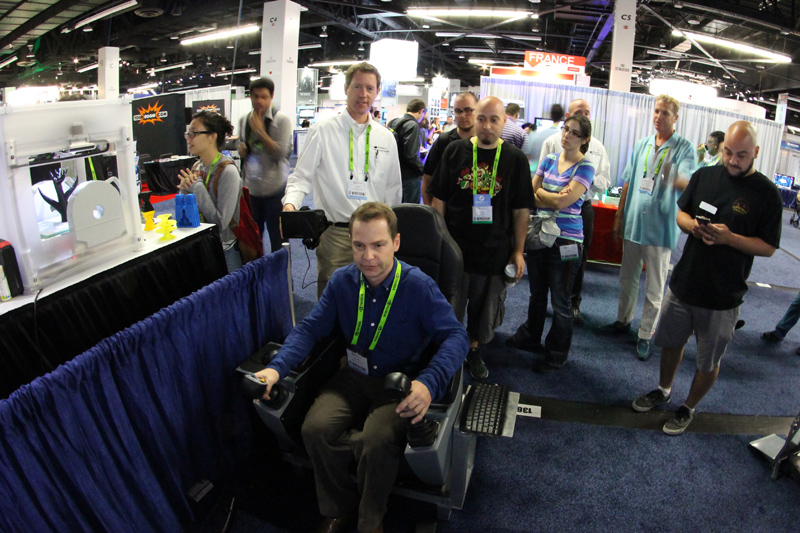If you work in the energy sector, or follow its trends as an interested outsider, you're aware of the ever-increasing need for operator training and re-training. Increased regulations, the development of new and more complex power plants, and the conversion from coal-fired to gas-fired units all contribute to the ever-increasing need for top-level training of managers, engineers and operators. Simulators are providing the training that's required to meet ever-changing industry standards and increase plant performance.
Energy Innovation Center
Shell Oil has been investing in 3D simulators for years. Their ACE VR Center in Lutong, Malaysia has been allowing them to visualize massive sets of geophysical data in high-fidelity real-time 3D for years. So it should come as no surprise that the University of Wyoming recently opened their $25.4 million
Energy Innovation Center this year, with donations by Shell, BP, Peabody Energy, Arch Coal, and Marathon Oil.
The center includes the
Shell 3D Visualization Laboratory which features a four-walled virtual reality room where researches can study complex and spatially related data sets. The laboratory will allow energy companies to derive maximum value from resources by researching simulated oil, gas and water movements, and their interactions with each other.
Fossil Fuel Power Plant Simulators
GSE Systems provides
Fossil Fuel Power Plant Simulators that deliver the high degree of knowledge and skill that is required in today's energy sector. The training simulators improve everything from faster plant start-ups, to fewer outages, to increased profitability.
Taking into account a high level of daily plant profit, if a simulator can help a plant avoid any shutdown, it has the potential to pay for itself ten-fold in a single day. In addition to fossil fuel power plant simulators, GSE develops virtual training simulators for nuclear power and petrochemical plants that allow operators to learn by doing, without any real-world risk. GSE's multi-million dollar 3D simulation center at Georgia Tech includes an electric generating power plant for student teams to train in before entering the workforce.
US Department of Energy IGCC Power Plant Simulator
The US Department of Energy recently launched their latest immersive training simulator at the National Energy Technology Laboratory.
Simulating an integrated gasification combined cycle (IGCC) power plant, the simulator leverages stereoscopic 3D that allows students the ability to move around the plant virtually while they train for operation.
Operators learn the complex chemical process of coal-gasification with carbon dioxide capture, coupled with combined-cycle power generation, a difficult and dangerous process to train for in the real-world, but one that can be conducted safely and affordably using virtual training simulator technology.
Virtual training simulators provide a distinct advantage to people in, or entering, the oil and gas workforce. Simulation-based training allows trainees to study everything from refinery methodology, to control panel operation, to emergency plant shutdown procedures. Students learn to quickly and correctly solve common plant operating problems. Simulators can provide realistic training for an entire refinery team, while removing all of the risks, essential for everyone from supervisor to operator. When you need to develop core competencies, develop practical problem-solving skills, and secure a high-level of rapid technical communication across your entire team, virtual training simulators are clearly the way to go. In an environment where poor communication and performance can lead directly to costly mishaps, training simulators allow students to practice repeatedly for situations they'll likely encounter when the real-world stakes are high.

Contact us on
ForgeFX 
Get updates on
Facebook 
Get tweets on
Twitter 
Connect on
LinkedIn





